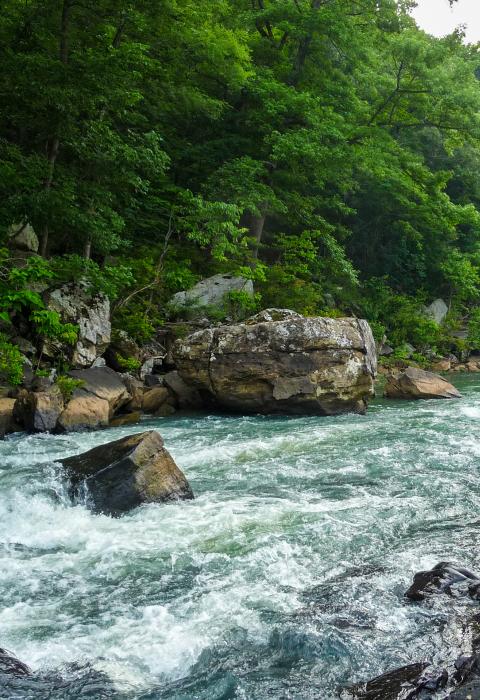Big Piney Creek
Arkansas
Big Piney Creek is located on the Ozark National Forest in northwest Arkansas. The river begins near the community of Fallsville and flows east and south for 57 miles to its junction with the Arkansas River.
Designated Reach
April 22, 1992. From its origin to the Ozark National Forest boundary.
Outstandingly Remarkable Values
Botany
Big Piney Creek supports plant species considered by the Arkansas Heritage Commission to be sensitive. One species, Alabama snow-wreath, is currently under study for listing as a federal threatened and endangered species and is already listed as threatened by the state of Arkansas. The corridor also includes the Waldo Mountain-Wainscott Bottoms Special Interest Area, which contains diverse plant communities and plant species.
Geology
The Mississippian and lowermost Pennsylvanian rock exposed near the town of Limestone are very important to understanding the history of the southern margin of the Ozark Platform. The youngest Mississippian-age rocks in North America, as well as the southernmost exposure of Morrowan-type rocks, are located in this area. These exposures create a structural window important in developing an understanding of the upper Mississippian and the basal Morrowan sequence. Many of these features are exposed along Big Piney and are of unique scenic and geologic value.
Recreation
Principal recreation activities in the corridor include canoeing, camping, swimming, and fishing. The river is very popular for canoeing, with Class I to III rapids. It is considered by the Arkansas Game and Fish Commission to be an outstanding sportfishing river, with smallmouth bass and spotted bass the most sought-after species.
Scenery
The distinctive scenery of Big Piney Creek is characterized by its sandstone bluffs, waterfalls, still pools, and stands of oak, hickory, and pine.
Wildlife
The terrain of the area offers spectacular chances for wildlife viewing. Among the more common species are white-tailed deer, turkey, black bear, stiped skunk, pileated woodpecker, bobwhite, canyon bat, and wood rat. Local birds—such as Louisiana waterthrush, parula warbler, and various herons—are augmented by migrants such as ovenbird, wood thrush, and re-eyed vireo. Beaver are common and frequently seen.

